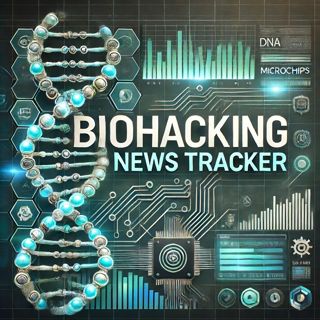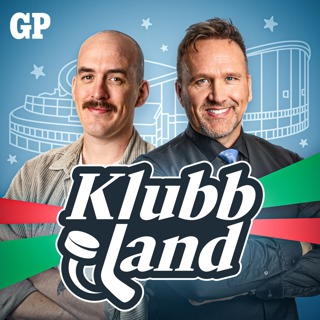
The Biohacking Boom Balancing Innovation and Ethics
The biohacking industry is experiencing rapid transformation and renewed public attention in early September 2025, with notable shifts in technology, access, and consumer demand. One of the most significant trends this week is a surge of innovation and investment in the cryotherapy segment. Latest data show the global cryotherapy device market was valued at 2.93 billion dollars in 2024 and is forecast to reach 4.28 billion by 2030, growing at a healthy compounded annual growth rate of 6.52 percent. The market has seen a clear pivot toward electric and gas-free cryo systems, which address safety and logistical challenges of liquid nitrogen devices. Demand is also rising for mobile, portable cryotherapy units, appealing to wellness centers, home users, and athletic facilities seeking accessible recovery technology. Integration of artificial intelligence and machine learning in cryotherapy devices is enabling real-time monitoring and personalized treatment protocols, a trend reflecting consumer expectations for data-driven and highly customized health solutions[1].In longevity and regenerative medicine, the conversation is dominated by high-profile industry figures like Bryan Johnson and a wave of elite retreats such as Longevity Island. These programs focus on advanced and sometimes controversial interventions like stem cell therapies and gene editing, which are available predominantly to wealthy consumers. This exclusivity is prompting growing concerns around ethical oversight and calls for new regulatory guardrails as treatments become more globally accessible. Some industry participants believe that the current focus on premium services may soon shift as research funded by this elite demand is gradually democratized[2].Consumer trends also reveal a strong movement toward holistic and functional wellness, with products like barefoot or grounding footwear entering the mainstream. Grounded Footwear, for example, has driven a cultural wave that prioritizes posture support and natural energy flow, illustrating the industry’s expanding intersection with everyday lifestyle products. Online conversations and social media trends highlight a desire for authenticity and transparency in biohacking-related offerings[4].Comparatively, these developments represent a broader push toward advanced medical innovation and greater consumer empowerment versus last year, which saw more fragmented and niche applications. Major leaders in the biohacking sector are responding by investing in smart technology, new delivery models, and public education to combat misinformation and address ethical debates. Overall, the industry is balancing rapid technological advancements with regulatory, ethical, and supply chain questions, shaping a landscape that is more inclusive but increasingly complex[1][2][4].For great deals today, check out https://amzn.to/44ci4hQThis content was created in partnership and with the help of Artificial Intelligence AI
3 Sep 3min

Biohacking Boom: Surging Investment, Personalized Wellness, and Regulatory Breakthroughs
The biohacking industry has seen rapid change in the past 48 hours, with new investments, product launches, and evolving consumer trends highlighting the sector’s growing momentum. The global biohacking and longevity market is projected to surpass 600 billion dollars by 2026, reflecting sustained investor confidence. This is reinforced by the recent lead-up to the Longevity Investors Conference 2025, which is drawing attention from both established financial institutions and startup ventures that focus on life extension, wearable health tracking, and advanced supplement lines. Notably, brands with advanced AI and bioengineering solutions are taking center stage in North America, the largest market for biohacking, buoyed by strong regulatory engagement and sustainability policies which encourage eco-friendly and data-driven product innovation.Demand for multifunctional products continues to climb as consumers embrace streamlined routines. According to interviews with industry leaders from Gencor and Schwan Cosmetics, skinimalism and minimalist health regimens are now central. Products that blend multiple functions, like AI-personalized skincare, nutrition-boosted formulas, and smart wearables, are outperforming single-focus offerings. Recent launches—such as LipoTrue’s AI-designed peptides that mimic fasting and HIIT benefits—showcase how the industry is merging wellness trends with technology to attract health-conscious buyers.On the regulatory front, significant milestones have been achieved, such as the approval pathway for MAL-838, a microbiome-friendly peptide solution for hair growth, suggesting authorities are increasingly open to novel, tech-driven therapies. This has led investors to scale up funding, anticipating near-term market launches and broader adoption of advanced biohacking products.Market disruptions this week include shifts in consumer spending patterns, with a move away from extreme, unproven biohacks and toward science-backed, safer tools. Supply chain issues triggered by global shipping bottlenecks briefly threatened inventory for some supplement and wearable brands, prompting many to increase transparency and prioritize local suppliers to ensure delivery.In comparison with last quarter’s cautious spending and regulatory uncertainty, the current environment is more optimistic. Leading companies are quickly adapting to transparency demands, simplifying product lines, and harnessing AI to optimize both health outcomes and sustainability. The evolving landscape signals a more mature, regulation-ready phase for the biohacking industry, marked by robust innovation and discerning consumer engagement.For great deals today, check out https://amzn.to/44ci4hQThis content was created in partnership and with the help of Artificial Intelligence AI
2 Sep 2min

"Biohacking Boom: Luxury Homes, Microbiome Breakthroughs, and Regulatory Shifts in the Self-Quantification Industry"
Over the past 48 hours, the biohacking industry has shown significant activity, marked by new product launches, regulatory interventions, shifting consumer interests, and rapid innovation across key market segments. A notable trend among affluent consumers is the adoption of at-home biohacking setups. Luxury real estate and wellness professionals report increased demand for home installations tailored for sleep optimization, red light therapy, and personalized sound environments, reflecting a broader spike in home-based biohacking and self-quantification tools compared to previous months. According to updates from August 31, this aligns with the surge in sales for high-end sleep and circadian rhythm gadgets now commonly included in premium real estate packages.New market entries have made headlines, especially with innovative supplements like HepatoBurn, featuring a dual-complex blend supporting both liver function and fat burning, now positioned as a top emerging supplement for September 2025. Other research in weight management continues to highlight gut health as a decisive factor for product efficacy, reinforcing the industry’s trend towards microbiome-focused solutions.On the medical front, companies are making strides in hair loss and dermatology biohacking. Recent regulatory progress was reported for hormone-free, microbiome-safe hair growth agents utilizing novel molecule sCD83. At the same time, Pelage Pharmaceuticals highlighted successful phase 2a trial results for PP405, a topical therapy that stimulates hair follicle stem cells without systemic exposure. Phase 3 trials are set for early 2026, indicating strong venture confidence.Regulatory bodies have also increased scrutiny. The FDA recently issued warnings to Supergoop and Vacation Inc. for selling unapproved sunscreen mousse products, signaling a tougher approach toward biohacking formulations, especially for unconventional delivery systems.Consumer preferences continue to shift toward personalized protocols guided by science-based content, driven in part by podcasts and digital platforms like Huberman Lab, where topics such as intermittent fasting and light therapy have seen spikes in engagement metrics. Analysts note that the desire for products promising cognitive and physical enhancement remains robust, with price premiums persisting in the high-end sector despite broader market volatility.Compared to the prior month, the current landscape features both tighter regulatory compliance and accelerated product innovation, illustrating a maturing yet still restless market facing both heightened expectations and increasing oversight.For great deals today, check out https://amzn.to/44ci4hQThis content was created in partnership and with the help of Artificial Intelligence AI
1 Sep 2min

Biohacking Breakthroughs: Transforming Gene Therapy and Personal Health
The biohacking industry is experiencing rapid and complex developments in the past 48 hours, marked by a surge of scientific breakthroughs, market expansion, and shifting consumer attitudes. Highlights include a landmark discovery by Yale researchers, who revealed on August 21, 2025, a new RNA-targeting capability within CRISPR-Cas9 that could redefine gene therapy and self-directed health interventions. This innovation has the potential to accelerate the push toward safe, at-home genetic modifications, increasing industry excitement about the intersection of gene editing and consumer biohacking.Driven by global health and wellness trends, new market entrants and financial deals are shaping the landscape. Notably, Canada recently secured a national partnership for wider access to the lipid-lowering therapy Leqvio (inclisiran), indicating government-level commitment to integrating cutting-edge treatments into proactive health management. The partnership is set to open up personalized medicine to a broader consumer base, representing a strategic alignment between pharmaceutical innovation and public health policy in biohacking.The Middle East, especially Saudi Arabia, is emerging as a hub for high-end biohacking clinics and wellness tourism. The wellness sector in Saudi Arabia is now valued at 19.8 billion dollars, with wellness tourism alone growing at 66 percent per year. New investments in both “hardcare” biohacking and “softcare” traditional wellness — such as longevity clinics, genetic diagnostics, and advanced fitness programs — are drawing both international and local customers who previously traveled abroad for such services.Consumer behavior reflects heightened demand for safe, research-driven tools over quick-fix products. The launch of antioxidant and nootropic products like Zatural Methylene Blue in late August 2025 underscores the appetite for robust cognitive and metabolic support among everyday biohackers. However, experts caution against unregulated gadgets and unproven wellness fads, highlighting risks as the market crowds with new entrants.Compared to the previous period, the industry is shifting further from fringe self-experimentation to regulated, scalable, and science-based services. While prices have remained steady, greater supply chain resilience and broader product access have been noted, and major brands are cementing their roles through education and partnerships. Industry leaders are responding by prioritizing rigor, regulatory alignment, and trusted partnerships, ensuring that biohacking continues on a trajectory toward mainstream health optimization.For great deals today, check out https://amzn.to/44ci4hQThis content was created in partnership and with the help of Artificial Intelligence AI
28 Aug 2min

Biohacking Industry's Rapid Evolution: Accessible Wellness, Smart Tech Trends, and Luxury Retreats
Over the past 48 hours, the biohacking industry has shown marked growth and active innovation, demonstrated by new business launches, shifting consumer patterns, and evolving product offerings. The industry saw a significant expansion in wellness-focused facilities, including the grand opening of HEAL Wellness plus Longevity in Forest Park, which offers biohacking therapies such as infrared saunas, cold plunges, and hyperbaric oxygen chambers. HEAL’s rapid uptake—already signing 150 members pre-opening—signals robust demand for accessible, technology-driven self-optimization services that blend modern science with traditional wellness. Their session prices, starting at 35 dollars, reflect efforts to broaden consumer reach beyond luxury clientele.Market data from the smart health sector indicates continued volatility in device sales, with smart scales featuring AI analytics now predicted to capture up to 40 percent of the health tech segment by 2026. The latest figures show sales dipped in July 2025 with just 2,601 units but recovered somewhat in August. North America and Europe remain the leading regions, with 68 percent of fitness enthusiasts favoring new connected devices. Holistic health tracking, including expanded metrics like hydration and glucose, is now a primary consumer draw, in line with a broader pivot to all-in-one wellness solutions.New industry competitors have emerged with high-end offerings, notably the launch of a luxury rehab and biohacking wellness sanctuary in Tulum, Mexico. The facility integrates advanced therapies with holistic practices, targeting affluent health tourists and furthering the trend toward lifestyle-based approaches and premium service environments. This model evidences a market split, with both accessible and ultra-premium segments thriving.Notable leadership events include the appointment of Cecilia Wadell, Ph.D., as Head of Development at AlzeCure Pharma AB, a move aligning with the sector’s need for cross-functional expertise between biotechnology and consumer health technologies.Consumer behavior continues to shift toward on-demand, customizable health experiences and products, as evidenced by rapid membership uptake at new facilities and increased demand for at-home smart tracking devices. These dynamics have shaped product innovation pipelines, spurring investment in next-gen analytics and richer, integrated health metrics.No major regulatory actions or supply chain disruptions were reported in the last week. Industry leaders are responding to demand volatility and competitive pressure through diversification, heightened personalization, and enhanced customer experience compared to previous quarters, when the emphasis was primarily on niche tech adoption and early-stage wellness integration.For great deals today, check out https://amzn.to/44ci4hQThis content was created in partnership and with the help of Artificial Intelligence AI
27 Aug 3min

Biohacking Boom: Tracking the Industry's Rapid Evolution Towards Science-Backed Wellness Solutions
The biohacking industry has seen dynamic movement over the past 48 hours, reflecting a blend of market momentum, new product launches, and evolving consumer expectations. Analysts estimate the global biohacking market will reach seventy billion dollars by 2030, with this week’s new launches driving demand for products focusing on sleep, cognition, sports performance, and fundamental ingredients in response to a fall reset theme. Industry leaders are prioritizing multi-benefit innovations, combining metabolic boosters, mood enhancers, and digestive aids into single formulations to capture sharper, more scientifically literate consumer preferences. Brands are now challenged to back marketing with credible science, as consumers adopt more technical language and demand evidence for wellness claims.Recent market activity includes a significant trade agreement between the United States and the European Union, establishing a tariff ceiling for pharmaceuticals and related products, which is expected to lower costs and expand market access for biohacking suppliers. European firms like Microphyt have also kicked off new microalgae biorefineries that promise cheaper and more sustainable ingredient supply, signaling a shift in biohacking supply chains towards bioeconomy solutions.Competition is intensifying as startups focus on niche audiences such as first responders or women’s hormonal health, challenging larger companies to adapt quickly or specialize further. Xyngular, a sector leader, has teased a major product launch this week targeting enhanced bioavailability and longevity, with industry insiders describing it as disruptive for established players. Meanwhile, the latest Biohacking Index Report released in July introduced a verified review system by doctors, enabling consumers to better compare product efficacy based on medical assessment rather than marketing alone.Critically, “longevity-washing”—marketing products using longevity language without substantive benefit—has come under increased scrutiny, pressuring brands to prove innovation and adapt to regulatory changes. Both US and EU regulators are reviewing definitions and permissible claims for biohacking products in response to consumer complaints, a process that might slow the launch cycle for some companies but is expected to enhance credibility industrywide.Compared to the previous month, consumer demand is shifting away from fad-driven gimmicks and towards evidence-supported biohacking solutions. Integrated wellness and personalized nutrition are rising priorities, with DIY biology and community-led experiments gaining visibility. Industry leaders are responding by investing in science-based research, strategic partnerships, and transparent communication, aiming to rebuild trust and validate results in a fiercely transformative sector.For great deals today, check out https://amzn.to/44ci4hQThis content was created in partnership and with the help of Artificial Intelligence AI
26 Aug 2min

Biohacking Boom: Unlocking Cellular Health and Longevity in the Personalized Wellness Revolution
The biohacking industry has seen notable developments in the past 48 hours, driven by surging interest in cellular health, personalized nutrition, and longevity. Latest market data reveals the global cellular health supplement market is valued at USD 1,998.7 million in 2025 and projected to grow rapidly, reaching USD 3,668.1 million by 2035, due to a 6.3 percent annual growth rate. This expansion is fueled by rising consumer demand for preventive care and anti-aging solutions, with scientific advances in NAD restoration, sirtuin activation, and autophagy receiving special attention.Deal activity and partnerships remain active, with European player Gonmisol announcing a strategic partnership with India’s K. Patel Phyto Extractions in holistic wellness, while major brands such as The ROOT Brands and Leela Quantum Tech continue to innovate with natural and quantum energy-based products. There is mounting momentum around events, with the Biohackers World Conference and Ultimate Wellness Conference both announced in the last week to showcase the latest wellness tools and connect industry leaders, signaling strong consumer engagement.Emerging competitors are focusing on blood sugar optimization, tapping into trending topics like “sugar switch method” and “insulin resistance hacks” through products such as GlucoSwitch. The market for nutricosmetics and bioactive mushrooms is also shifting, as younger consumers increasingly seek products with immediate, visible results rather than traditional long-term solutions. Protein-rich functional foods and new uses for ingredients like tomato leaves are being explored.From a regulatory standpoint, there are no major disruptions reported this week, but sustainability issues are coming to the forefront. Industry experts are convening for actionable summits to address the over-exploitation of botanicals and the impact of toxics such as phthalates and parabens on metabolic health, aligning with consumer preference for natural and clean label products.Supply chains remain stable overall, with no significant price hikes, but global brands are wary of pending decisions from conglomerates like Nestlé, which could reshuffle the supplement landscape if it divests several major brands. Compared to earlier in the year, the emphasis on personalized and scientifically validated products has intensified, as health optimization enters mainstream consumer consciousness. Leading companies are responding by doubling down on transparency, clinical trials, and sustainable sourcing to stand out in an increasingly crowded market.For great deals today, check out https://amzn.to/44ci4hQThis content was created in partnership and with the help of Artificial Intelligence AI
13 Aug 2min

Biohacking Boom: Navigating the Rapid Rise of Personalized Health Tech
The biohacking industry has seen notable developments over the past 48 hours, reflecting both market momentum and the challenges that come with rapid innovation. The global biohacking market is now valued at approximately 2.8 billion US dollars for 2025 and is projected to reach 3.7 billion by 2032. This represents steady growth, mainly fueled by increased adoption of digital health platforms and artificial intelligence integrations, which have sparked a 28 percent rise in user engagement in 2025. Investors and consumers are increasingly focused on sustainability and ethically sourced biohacking products, a trend especially strong in North America and Europe.Significant recent developments include a high-profile experiment by entrepreneur Bryan Johnson, who publicly shared his trial of methylene blue, an FDA-approved compound gaining attention in the biohacking and anti-aging spheres. This experiment, drawing widespread discussion online, highlights increasing consumer interest in unconventional approaches to longevity and cognitive health. The surge in such experiments points to a broader consumer shift: there is growing demand for products and protocols that promise rapid, measurable bio-optimization, despite regulatory ambiguities surrounding many new compounds.On the business front, cognitive enhancement products and nootropics have climbed by 25 percent in revenue over the past year, driven notably by their adoption in workplace wellness programs. Nutrigenomics—customized nutrition based on genetic markers—is another hot segment, anticipated to sustain a 20 percent compound annual growth rate through to 2032.Supply chain dynamics remain relatively stable, with enhanced production capacity offsetting inflation pressures on reagent and consumable prices. Leading companies are hedging against disruptions by investing in scalable, digital-first platforms and new market outreach, especially in Asia Pacific where adoption rates are accelerating.Looking at consumer behavior, early adopters are fueling rapid market expansion by seeking out personalized, scientifically validated biohacking products. Industry leaders are responding by partnering with digital health startups, expanding global research collaborations, and ramping up educational campaigns to address skepticism and safety concerns.Finally, the upcoming October 2025 Zenos Wellness Summit in Saudi Arabia, announced this week, underscores the globalization of biohacking, as industry thought leaders converge to discuss new science and regulatory frameworks within the context of regional health transformation priorities. Compared to previous quarters, the biohacking sector is now more collaborative, data-driven, and globally networked, responding dynamically to both regulatory scrutiny and consumer demand for ethical innovation[1][2][3][5].For great deals today, check out https://amzn.to/44ci4hQThis content was created in partnership and with the help of Artificial Intelligence AI
7 Aug 3min





















